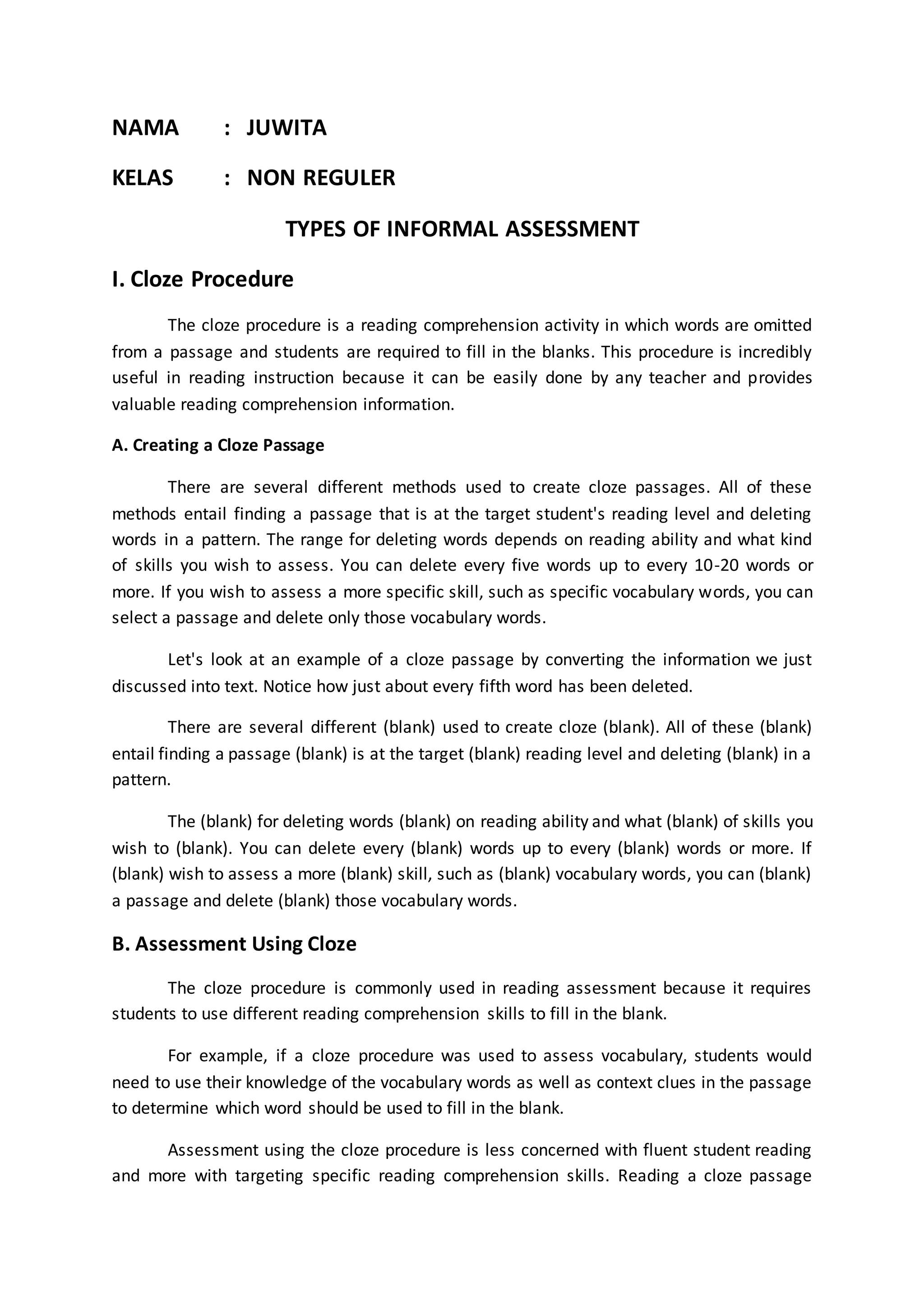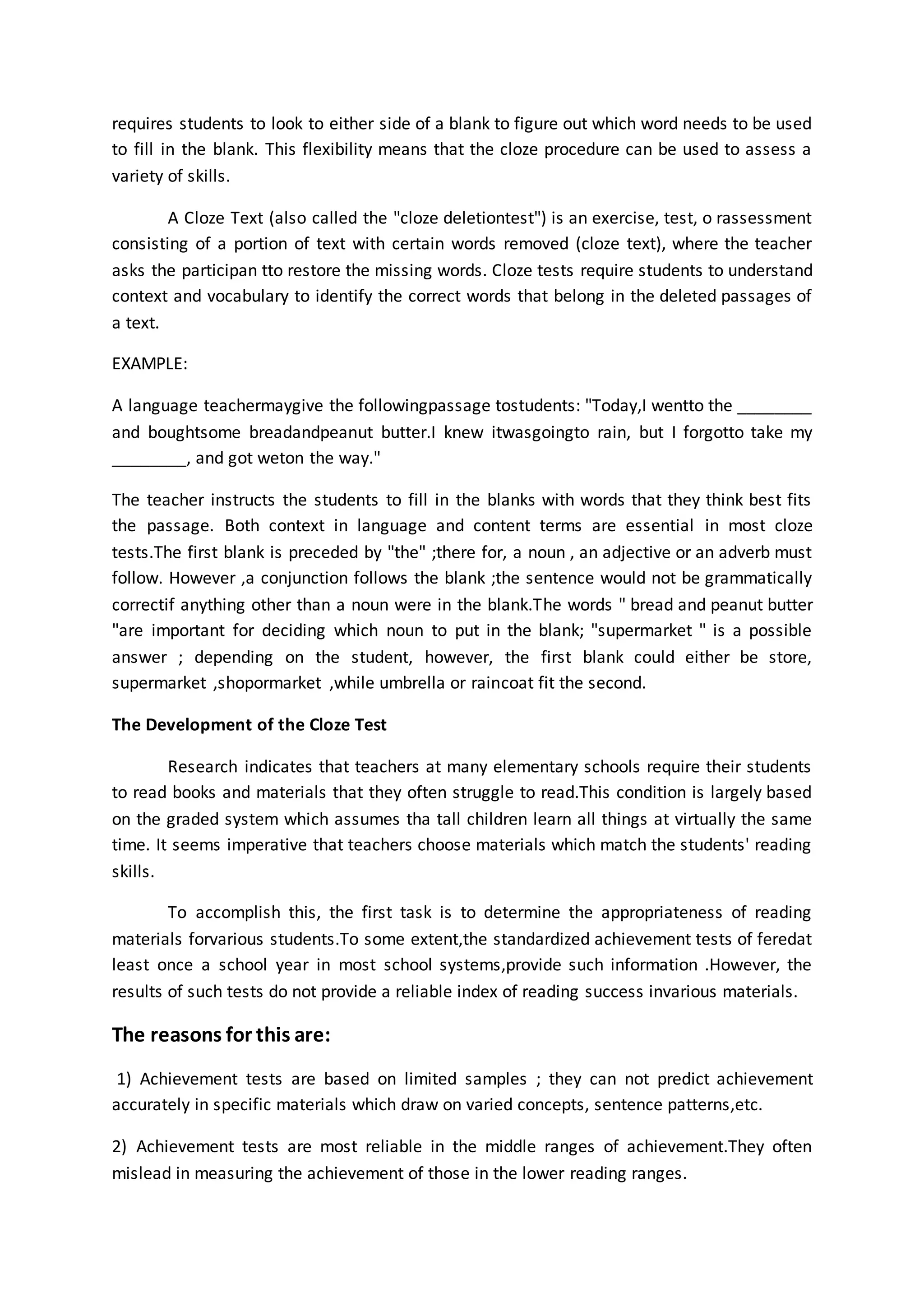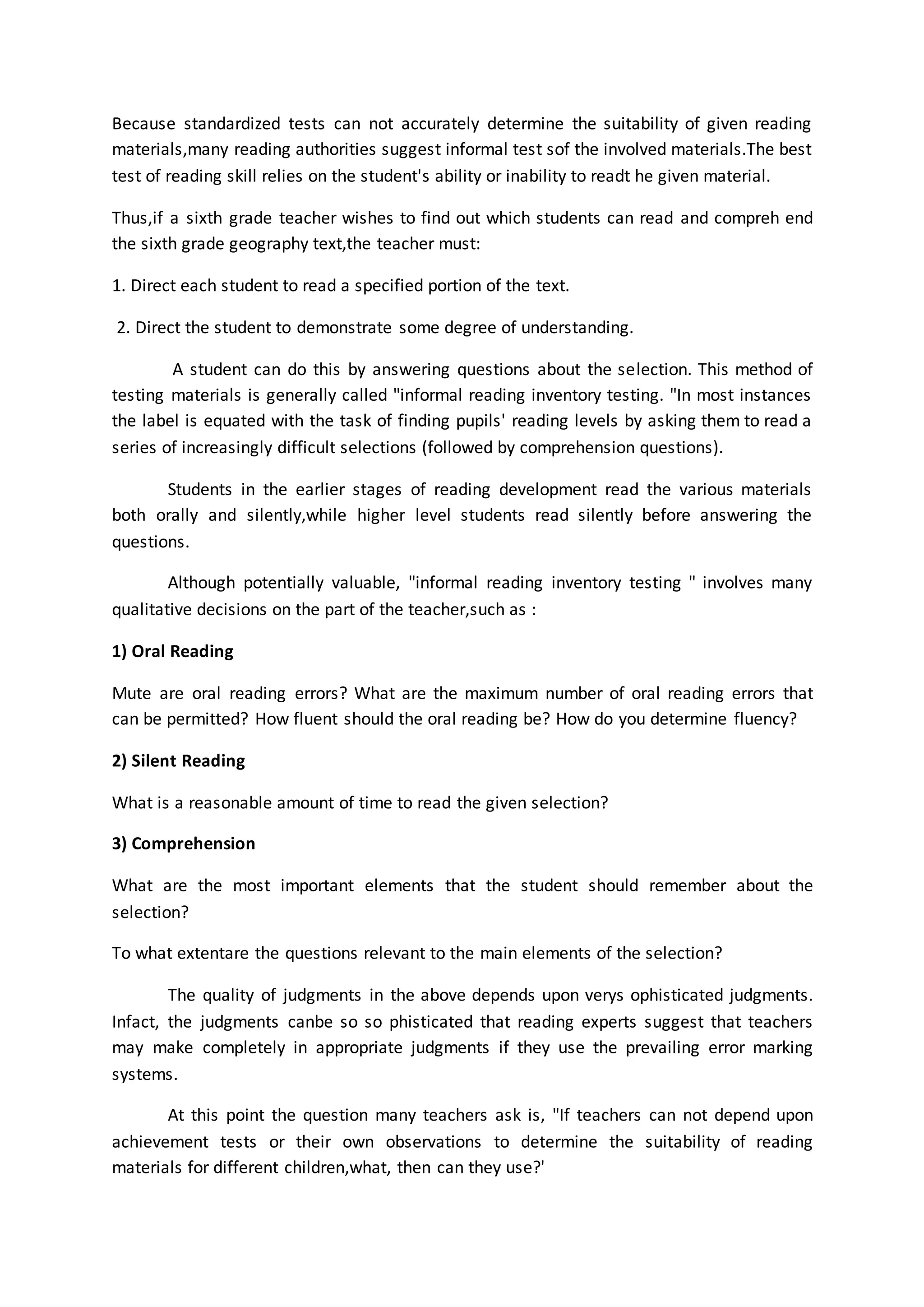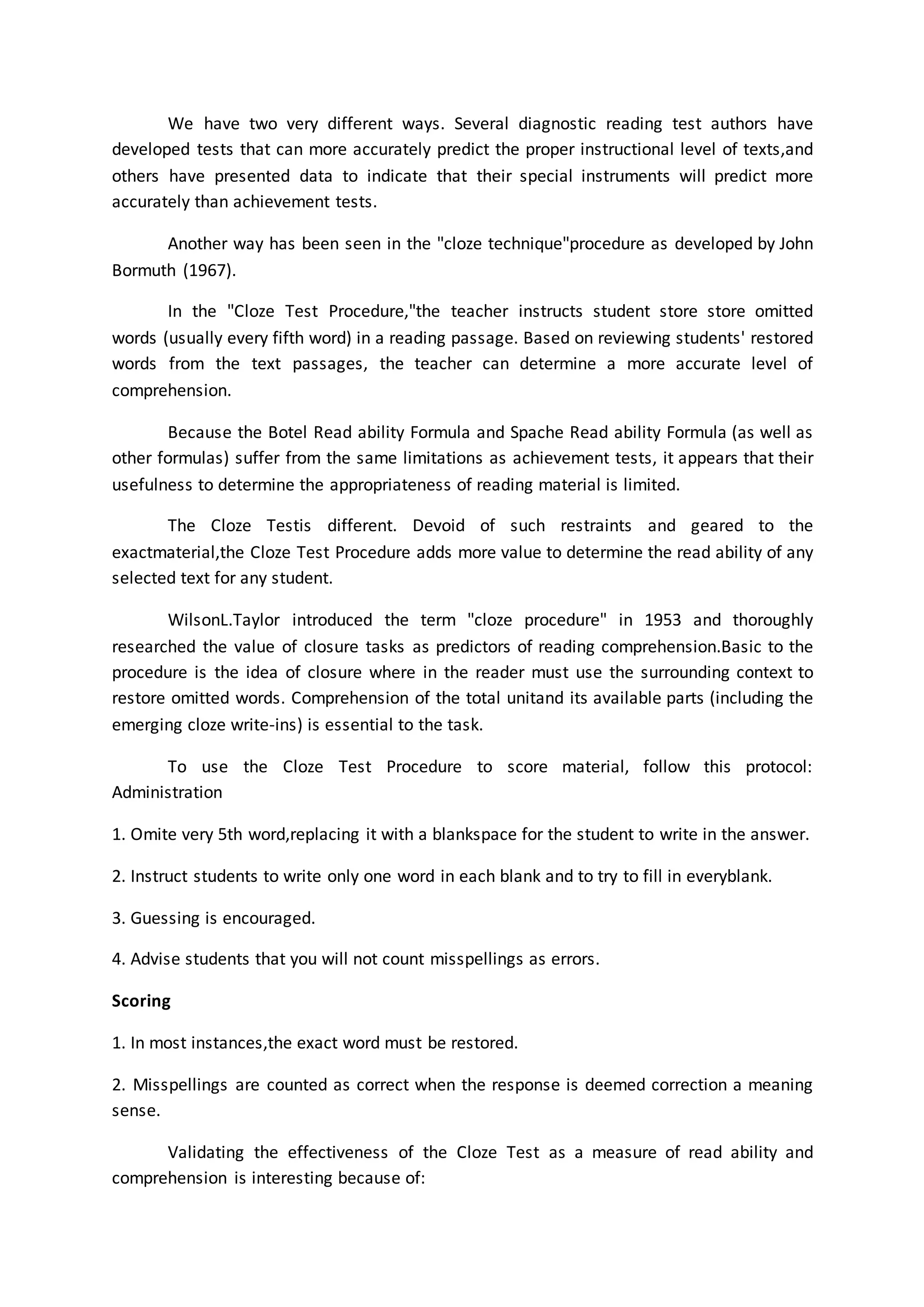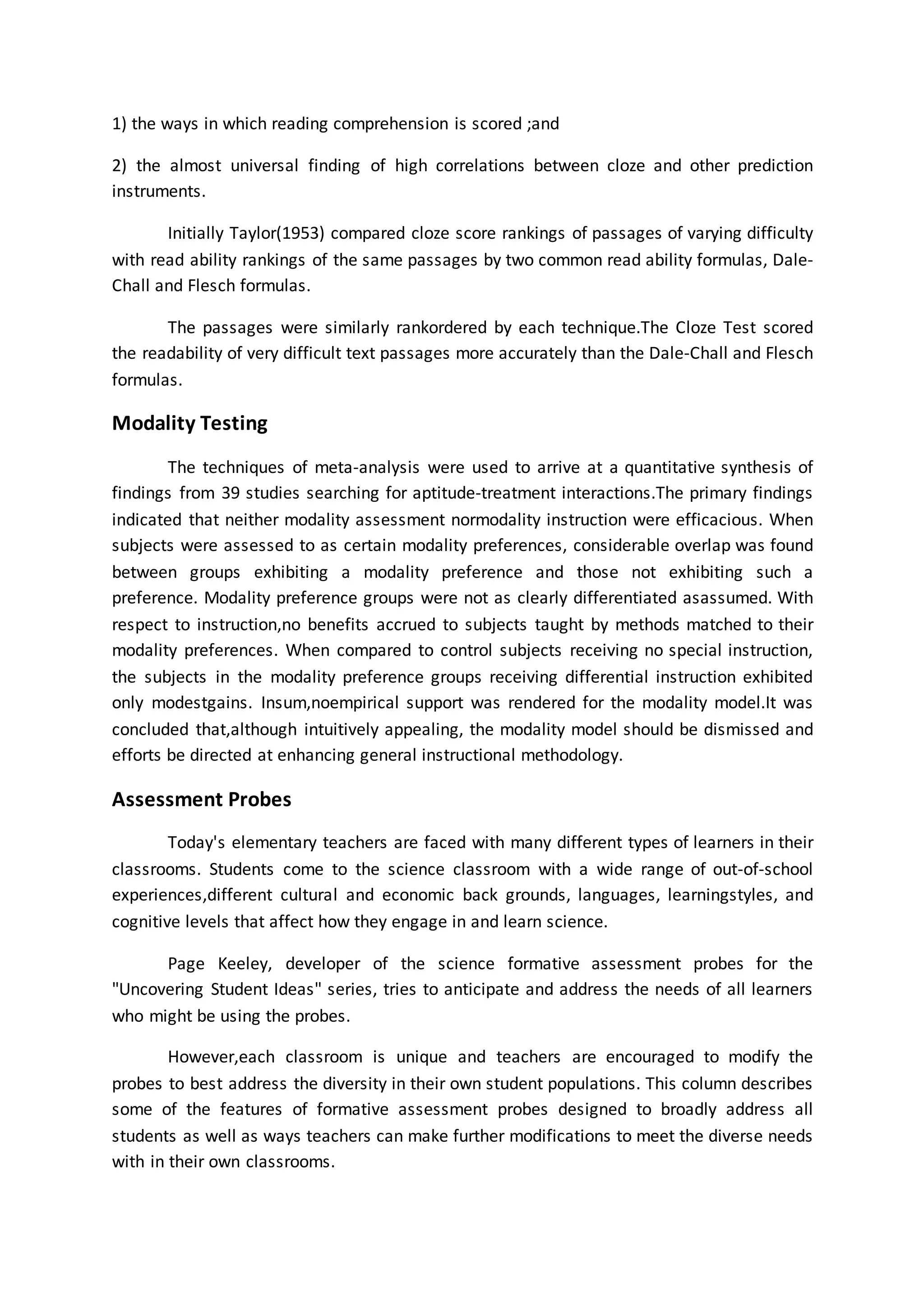This document discusses types of informal assessments, including cloze procedures. It provides details on how to create and administer cloze passages by deleting words in a pattern. Cloze procedures can be used to assess specific reading comprehension skills like vocabulary. The document also discusses the development and effectiveness of the cloze test procedure for determining the readability level of texts for students.
